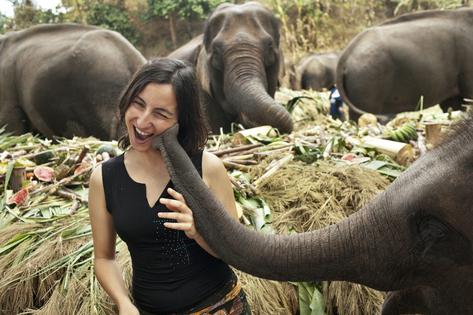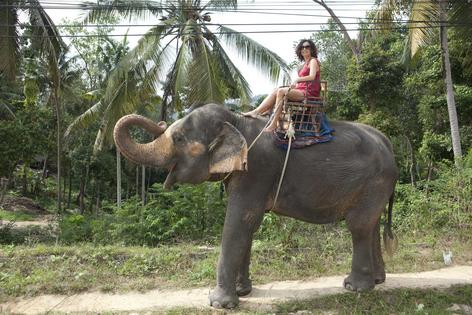Elephant tourism often involves cruelty – here are steps toward more humane, animal-friendly excursions
Published in News & Features
Suju Kali is a 50-year-old elephant in Nepal who has been carrying tourists for over 30 years. Like many elephants I encounter through my research, Suju Kali exhibits anxiety and can be aggressive toward strangers. She suffers from emotional trauma as a result of prolonged, commercial human contact.
Like Suju Kali, many animals are trapped within the tourism industry. Some venues have no oversight and little concern for animal or tourist safety. Between 120,000 and 340,000 animals are used globally in a variety of wildlife tourism attractions, including endangered species like elephants. Over a quarter of the world’s endangered elephants reside in captivity with little oversight.
Wildlife tourism – which involves viewing wildlife such as primates or birds in conservation areas, feeding or touching captive or “rehabilitated” wildlife in facilities, and bathing or riding animals like elephants – is tricky business. I know this because I am a researcher studying human relationships with elephants in both tourism and conservation settings within Southeast Asia.
These types of experiences have long been an extremely popular and profitable part of the tourism market. But now, many travel-related organizations are urging people not to participate in, or calling for an outright ban on, interactive wildlife experiences.
Tourism vendors have started marketing more “ethical options” for consumers. Some are attempting to truly improve the health and welfare of wildlife, and some are transitioning captive wildlife into touch-free, non-riding or lower-stress environments. In other places, organizations are attempting to implement standards of care or create manuals that outline good practices for animal husbandry.
This marketing, academics argue, is often simply “greenwashing,” applying marketing labels to make consumers feel better about their choices without making any real changes. Worse, research shows that some programs marketing themselves as ethical tourism may instead be widening economic gaps and harming both humans and other species that they are meant to protect.
For example, rather than tourist dollars trickling down to local struggling families as intended by local governments, many tourism venues are owned by nonresidents, meaning the profits do not stay in the area. Likewise, only a small number of residents can afford to own tourism venues, and venues do not provide employment for locals from lower income groups.
This economic gap is especially obvious in Nepalese elephant stables: Venue owners continue to make money off elephants, while elephant caregivers continue to work 17 hours a day for about US$21 a month; tourists are led to believe they are “promoting sustainability.”
Yet, there are no easy answers, especially for elephants working in tourism. Moving them to sanctuaries is difficult because with no governmental or global welfare oversight, elephants may end up in worse conditions.
Many kindhearted souls who want to “help” elephants know little about their biology and mental health needs, or what it takes to keep them healthy. Also, feeding large animals like Suju Kali is pricey, costing around $19,000 yearly. So without profits from riding or other income, owners – or would-be rescuers – can’t maintain elephants. Releasing captive elephants to the jungle is not a choice – many have never learned to live in the wild, so they cannot survive on their own.
...continued











Comments